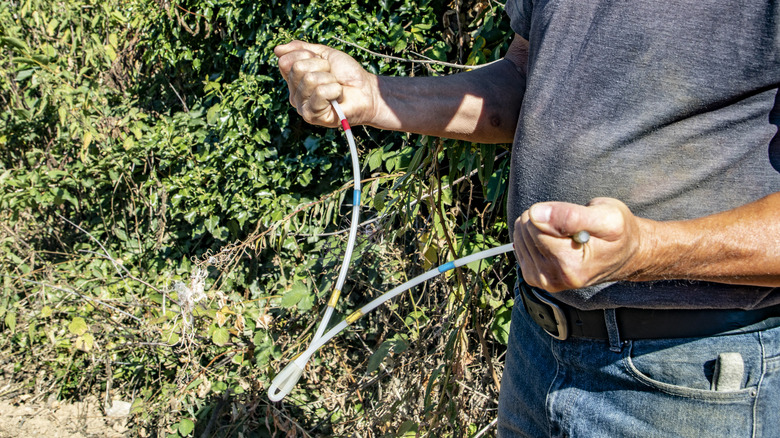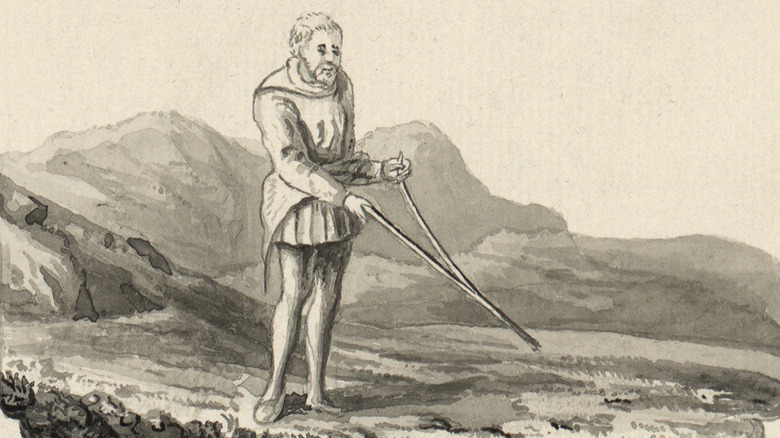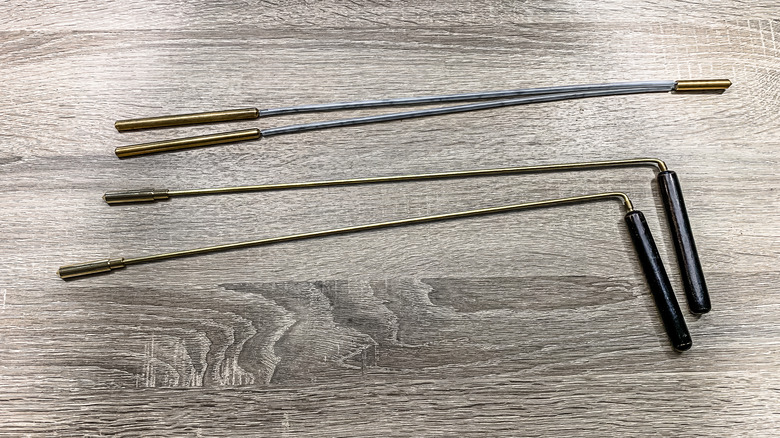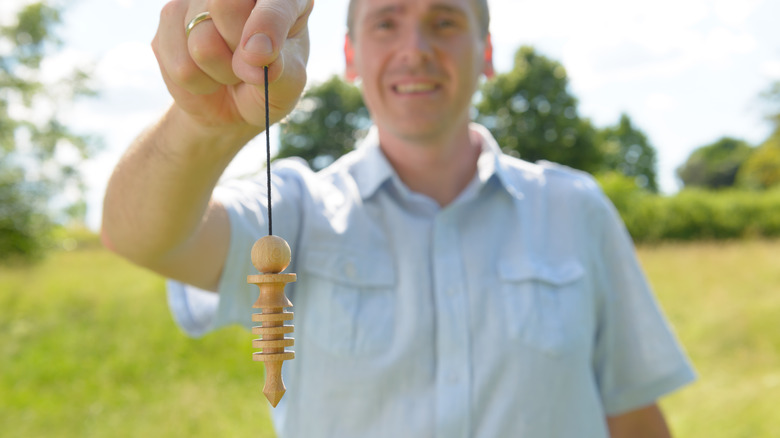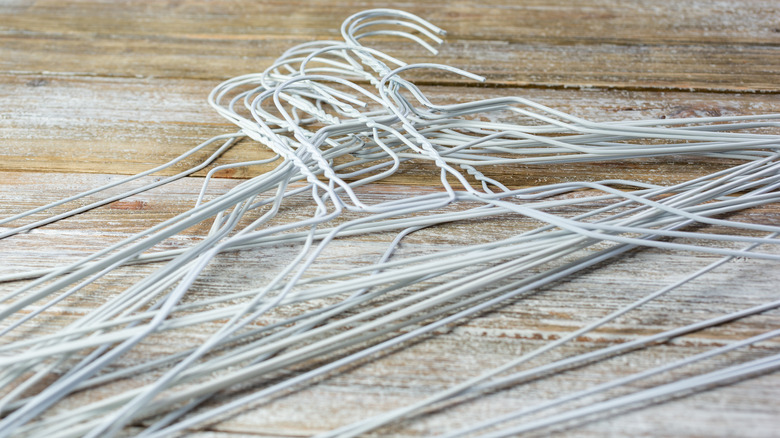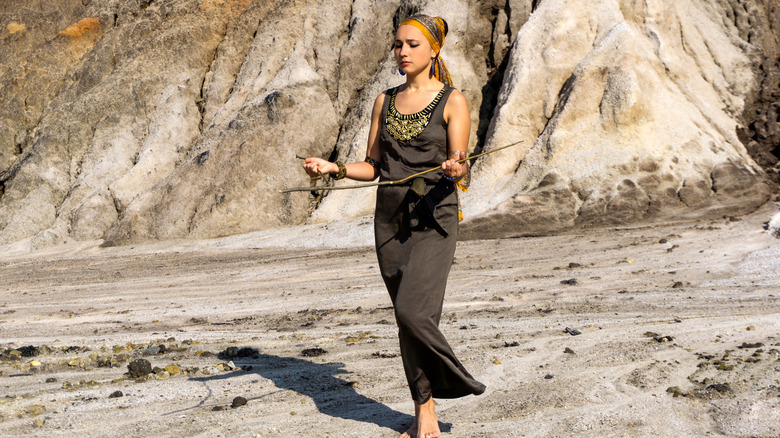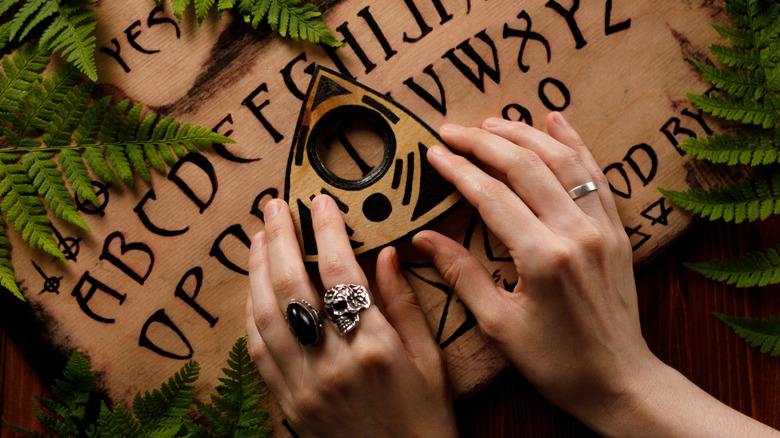Water Witching: An Ancient Art Or Pseudoscience?
If you were lost in a desert, what is the one indispensable object you should have with you? Some may answer the obvious and say a canteen. Others may say a compass. Still others may opine that you must have a multi-tool. Then there may be a few people who say you must have a branch shaped like the letter Y.
Those who would provide such unorthodox advice may be members of the American Society of Dowsers. These people claim that using tools and techniques more ancient than antiquity can locate things beneath the earth. They are most well-known for allegedly locating water through a practice called dowsing — or water witching.
Scholars have derided water witching as a pseudoscience, while those who practice it and many who hire water witches believe it to be an ancient art — both venerable and indispensable. The truth is that water witching is both an ancient art and pseudoscience. Let's find out why.
What is water witching?
So what exactly is water witching? The U.S. Geologic Survey defines it as the "practice of using a forked stick, rod, pendulum, or similar device to locate underground water, minerals, or other hidden or lost substances." The most common term for these practices is "dowsing," although when using the technique to look for underground oil, it is called "doodle bugging."
The instrument used by the water witch (or dowser) has many names, including a dowsing stick, a dowsing rod, a divining rod, or in the case of a petroleum search, a doodlebug. The dowser roams about a particular area holding the device outward in the hands. Movement from the divining rod indicates to the dowser the presence of... something.
As stated above, although primarily associated with finding water, dowsing has been used to try to locate virtually anything. The FBI Law Enforcement Bulletin, for example, posted a recent article on how dowsing has been used to try to find buried bodies — called "grave witching." One technique used to do this is illustrated in "Haunted Stark County," where the dowser holds the divining stick and thinks, "Bodies, bodies, bodies." The book "Secret Societies" tell us that an English police force tried to locate two bodies during World War II using these techniques. Another more alarming example is how people have sold bomb-detecting devices to various authorities, which were no more than dowsing rods. This erupted into a scandal, resulting in arrests and jail sentences in the United Kingdom.
Water witching is an ancient art
There is no doubt that water witching is an ancient art. The earliest known record of the practice is found in cave paintings in Tassilli, Algeria dating back to 6000 BCE. These depict a figure holding what appears to be dowsing sticks pointing upward. Other evidence of water witching has been seen in ancient Egypt and China.
Water witching also (sort of) appears in the Old Testament of all places in the form of Moses' rod. In the Book of Numbers, there is a well-known story about the Israelites wandering the desert after escaping Egypt when they realize they are out of water. To get some, Moses struck a rock twice with his stick, and water came out. This has been taken as evidence of water witching by Moses. There is also evidence of the practice among various ancient peoples. For example, the ancient historian Herodotus wrote that the Scythians used willow rods for divination purposes. Also, multiple figures in ancient Greek mythology had magical rods, such as Hermes and Circe, which have been thought to be analogs to divining rods.
Still, there is hardly any written evidence of dowsing in the form it is understood today — at least until the 1500s.
Dowsing was always disputed
Archaeology and conjecture aside the first verifiable mention of dowsing appears in Georgius Agricola's 1556 work "De Re Metallica," which is not a book about heavy metal bands, but a treatise on how to find ore veins in Germany offering the method of using forked hazel branches. The method is similar to what water witches do today: "...they wander hither and thither at random through mountainous regions. It is said that the moment they place their feet on a vein the twig immediately turns and twists, and so by its action discloses the vein; when they move their feet again and go away from that spot the twig becomes once more immobile."
The book also reports that the dowsers of the day said it worked because of "the power of the vein" which forces the branch to twist and turn. Yet even then, some viewed dowsing as superstition stating that the movements of the branch were due to the "manipulations of the miners." It is believed that German miners then migrated to Britain during the late 16th century where the practice was adopted. It then made its way over to the colonies and became embedded in American folk culture since its beginning. But by this time, religious authorities had widely condemned witching as satanic or folk superstitions. Still, some churches allowed water witches to ply their trade to locate water on their own estates.
Water witching tools
Water witches use a seemingly endless array of tools to assist them in divination. The most common witching rod used today and ones that Richard Webster states in his book "Dowsing for Beginners" are "the best tool to start with" are angle rods. These are a pair of L-shaped rods of metal wire which the dowser holds in each hand. Some water witches put covers on the short portion of the L which allows the rods to swing freely.
Some water witches prefer to use wands — sometimes called bobbing sticks. These are thin tapered branches which while originally wood come now in a variety of materials including nylon or plastic. It is supposed that these wands may have been the forerunner of the traditional forked divining rods. These are usually V- or Y-shaped branches from a tree with an interior angle of between 40 to 70 degrees. It doesn't really matter which tree it is from but dowsers seem to prefer flexible branches from willow, birch, peach, cherry, or apple trees. Sometimes, these rods are not even made of wood. Whalebone had been traditionally used and contemporary water witches may use plastic or fiberglass. In that respect, water witches have always been pragmatic about what materials are at hand.
Even more water witching tools
Water witches do not necessarily have to use a stick. Dowsers may also go in a completely different direction and use a pendulum. This is exactly what it sounds like: a weight on a string or chain. The weight should be a few ounces but if in a pinch one can be lighter. Of course for those water witches with a more aesthetic sense, there are a range of pendulums on the market place from the wooden to the crystalline to the fancy Mermet pendulum which unscrews to hold a sample of what you are looking for. These are still reasonably priced.
The fact is almost anything can be used as a dowsing rod. "Dowsing for Beginners" cites the use of pliers, scissors, and pencils. Then there are some water witches who eschew tools altogether. These dowsers are nicknamed "hand tremblers" since they canvas a site making hand motions or holding the arms rigid in front of them. This is the rarest variety of dowser and the Canadian Society of Dowsers provides some rather esoteric techniques for this practice which includes finger wiggles, visualizing a Slinky in your palms, and seeing how you blink. It seems hard to explain to those who are not in the know.
Water witching techniques
How does a water witch witch water? The general procedure is that the dowser roams over a certain area holding the divining rod to move. When using a forked rod, the traditional method is to hold onto the branch of the fork with palms facing up and the bottom branch facing up at a 45-degree angle. As the diviner walks over the area in question, the rod will supposedly start to dip when over water. For angle rods, the water witch holds the shorter end so that the longer end extends outward. These allegedly crisscross when over a water source.
Dowsing wands (i.e. bobbing sticks) are used to divine the depth of the water. It is held by the thinner end and starts to bob up and down. The number of bobs indicates how deep the water is. Pendulums may be used on-site or remotely. A well-known practice is for the dowser to hold the pendulum over an unfolded map. The pendulum with circle or drop down on spots which to the dowser indicates the presence of water. "Pendulum Power" relates a story of a French dowser, Joseph Treyve who received two stones in the mail and was asked to figure out where they were. Using the pendulum and a map, he allegedly located the exact spot.
And don't despair if any of these techniques seem too complex. There are many helpful how-to videos to be found online.
If you use a dry cleaners then you can craft a divining rod
If what you read so far sounds awesome and you want to start water witching yourself you will find it is very affordable. You can easily make a diving rod yourself through resourcefulness and improvisation. Do you have a tree or bush you can easily access? If the answer is yes then you can obtain a forked rod simply by finding and cutting out a Y-shaped branch. Measurements do not seem to matter. In fact, dowsers often just cut a branch to be used one time only.
If you prefer angle rods, then wire hangers such as those you may obtain from a dry cleaner may be converted into the appropriate divining tool with a couple of snips. If you'd like a handle on the short end of the rod so the wire can swing freely, "The Complete Book of Auras" recommends using plastic or rubber tubing — a disposable straw or the casing for a pen will do. Even pendulums can be freely improvised. Instead of spending hard-earned cash for a crystal pendulum, a string weighted by a paperclip can do the trick.
It is obvious that dowsing can be open to anybody — even Adolf Hitler. "Secret Societies" explains how der Fuhrer may have used dowsers to try to find a good place to sleep while in the thick of World War II. Maybe that's how his last underground bunker came to be placed.
What dowsers say happens
Water witches provide variety of responses as to how dowsing works which "The Skeptic Encyclopedia of Pseudoscience" divides into physical explanations, psychic explanations, or some combination thereof. Some physical explanations state that it has to do with the Earth's magnetism or that energy emanating from that which is being sought (i.e. water, oil, precious metal, bodies, etc.). The energy aligns and attunes to the dowser and the divination rod. An example of this is provided in "The Complete Book of Dowsing and Divining" which relates a 1966 Russian experiment in which dowsers when flown over a river felt no pull at their rods but when they went to the shoreline found they were attracted toward the water.
Psychic explanations center on how the dowser has the extrasensory ability to search into the substrate and connect with the water below. These explanations expand into different theses dependent on which New Age guru you are listening. For example, "Pendulum Dowsing" does its best Yoda when it theorizes about different kinds of living energy fields between all things. This book defined dowsing as "the communication of subtle energies and information perceived by one's extended senses and natural intuition with the focused 'rational' mind through a device, tool, or learned response." The author also stated that dowsing can be understood in the context of quantum physics — which is conveniently not understandable to most. As such, the latest scientific theories are susceptible in being coopted by dowsers to explain the pseudoscience.
What the scientists say
Water witching has been put to the test many times by scientists over the centuries and found lacking. All properly controlled scientific experiments have shown that it does not work and under controlled conditions works no better than chance. In addition, studies have shown that the divining rods are not at all affected by the presence of water.
Scientists explain that a high success rate of a dowser is because of the nature of groundwater. Groundwater exists in most locations. The U.S. Geologic Survey in its debunking of water witching states, "The dowser commonly implies that the spot indicated by the rod is the only one where water could be found, but this is not necessarily true. In a region of adequate rainfall and favorable geology, it is difficult not to drill and find water!"
Yet believers in water witching contend that it is successful and rely on anecdotal evidence. How could water witching be a mere pseudoscience when there are instances of dowsers being successful at finding water up to 90% of the time? Furthermore, they dismiss scientific studies as naturally biased against dowsing and therefore not to be trusted. Scientists are not conciliatory. Perhaps the author of "Understanding Groundwater" put it best when he wrote, "If you are going to hire a dowser to find a water supply you might as well have him check your aura, diagnose your heartburn, free your Chevy of evil spirits and choose a stock portfolio for you."
The Munich experiment
There is one study that water witches claw onto. Professor Hans-Dieter Betz of the University of Munich published studies in the 1990s which contended that dowsing worked. His original experiments were carried out in a barn where a pipe atop a wagon could be connected to create random water flows in different locations. Dowsers on the upper level of the barn and those below did not know where the dowser was creating a double-blind study. Also, the entire experiment ground was inspected by a magician to detect fraud. Betz found that a few chosen dowsers were more successful than others in locating water over a wide variety of locations. In a later paper, Betz concluded, "The results obtained show the dowsing technique to be a serious alternative for groundwater prospecting." Dowsers have used this study to the present as conclusive proof that water witching is a legitimate phenomenon.
These results have been highly criticized, especially by J.T. Enright of the Scripps Institute of Oceanography. He noted that the Munich tests were not legitimate since Betz counted only the most successful dowsers and selected for only those water witches which seemed to support his claims. In other words, if you have a large group of dowsers some will randomly find water. When these are selected over the others it biases the results. Enright wrote, "...the Munich experiments constitute as decisive and complete a failure as can be imagined of dowsers to do what they claim they can."
The ideomotor effect
If science has largely debunked dowsing as a pseudoscience then how does it explain the movement of the divining rods? What is happening is called the ideomotor effect. This is best described as involuntary movement caused by the subconscious mind. For example, with the pendulum, small involuntary movements will make it start to swing. It doesn't take much to do it. The same is true for dowsing rods. What is likely occurring is that the dowser expects an outcome and this creates the necessary movements which are undetected by the dowser. The FBI's Law Enforcement Bulletin explains, "The pointers are typically held in a position of unstable equilibrium, and, therefore, a small movement, such as an involuntary vibration in the user's arm, becomes amplified and causes the pointers to visibly move." This phenomenon has been attributed to how Ouija boards work.
Some dowsers accept the ideomotor phenomenon but simply add that it is being caused by their own psychic forces and connections to the energy of what they are seeking.
While it may seem petty to argue the point, belief in dowsing can be extremely dangerous. "The Skeptics' Guide to the Universe" reported that a U.K. businessperson made about $75 million in selling a golf ball finder that was a dowsing rod. While this seems harmless, he took the device and sold it as a bomb detector. It probably resulted in hundreds of deaths in Iraq and definitely resulted in a 10-year prison term for the fraudster.
But its cheaper than a hydrologist
Despite the evidence that this ancient art is a pseudoscience, water witching still remains popular. This may be due to climate change and costs. In 2022, the Los Angeles Times reported that as drought impacted California there has been an uptick in hiring water witches. They happen to be more affordable than scientists. For example, in 2021, the New York Times stated that a well-known Californian dowser named Rob Thompson quoted $1,400 for a dowsing visit while a geologist quoted a minimum of $6,500. These financial pressures help explain why according to the Wine Industry Advisor that Californian vineyard owners have been turning more and more to water witches to locate this scarce commodity. Even some water companies hire water witches. New Scientist reported in 2023 that in the United Kingdom, the Thames Water and Severn Trent Water companies used dowsing rods to locate leaks.
It seems that finding water leaks is as ancient as dowsing itself. It is likely that belief in water witching is not likely to recede as dowsers and those who hire them are set immobile in their beliefs. As one dowsing book states, "It is impossible to prove to some people that we went to the moon if they don't want to believe it. The same is true for divining. If you convinced yourself that you do not want to believe it, then it doesn't matter what we say; you'll never be convinced."

